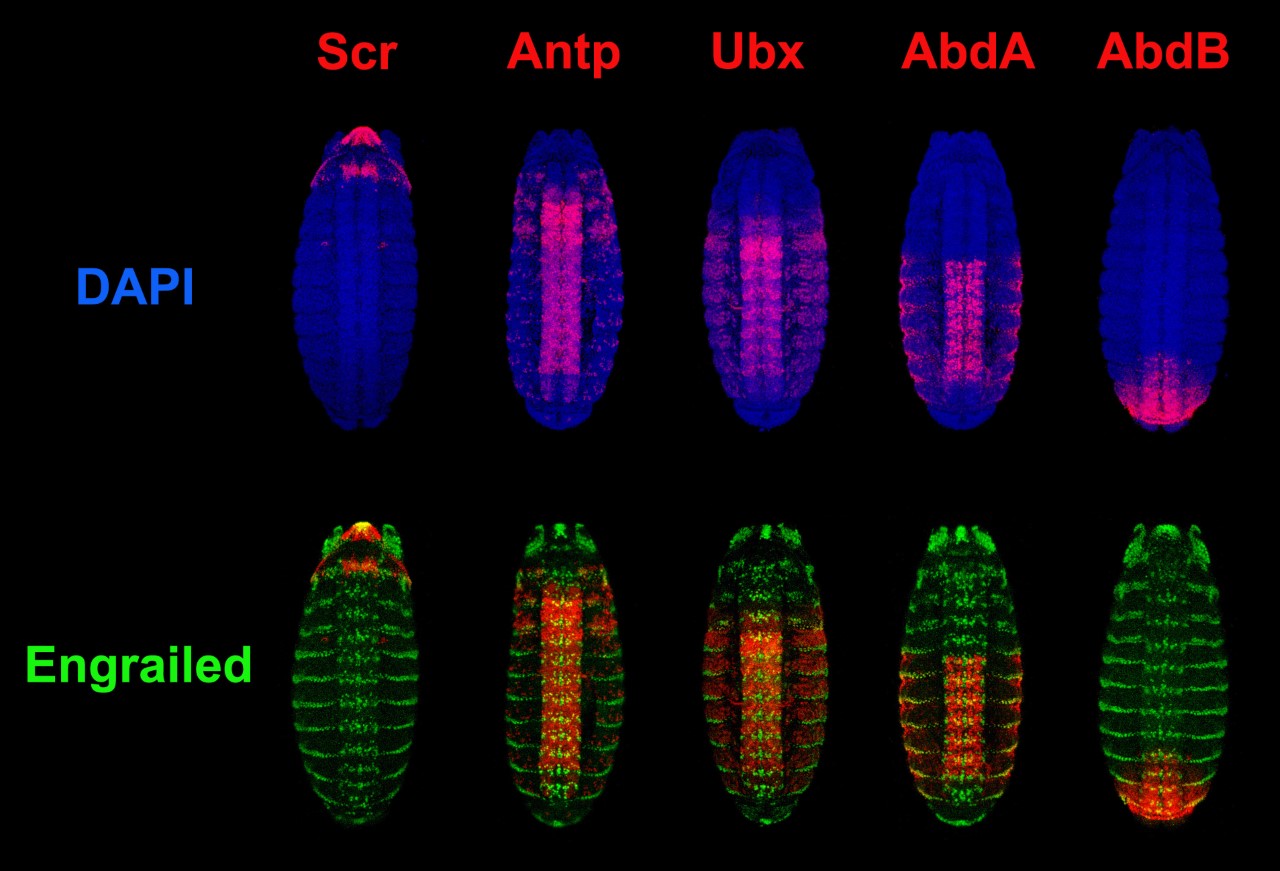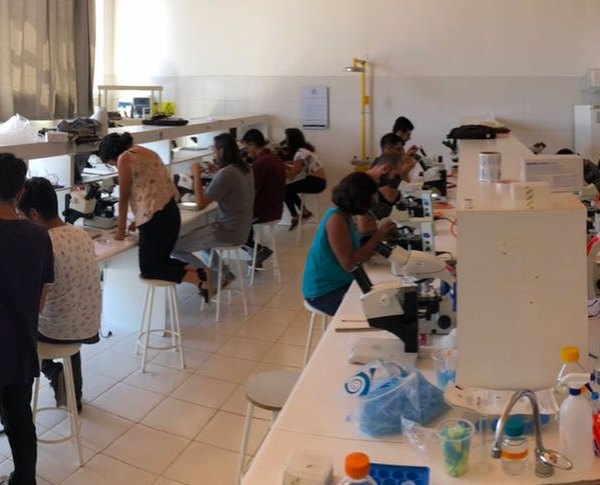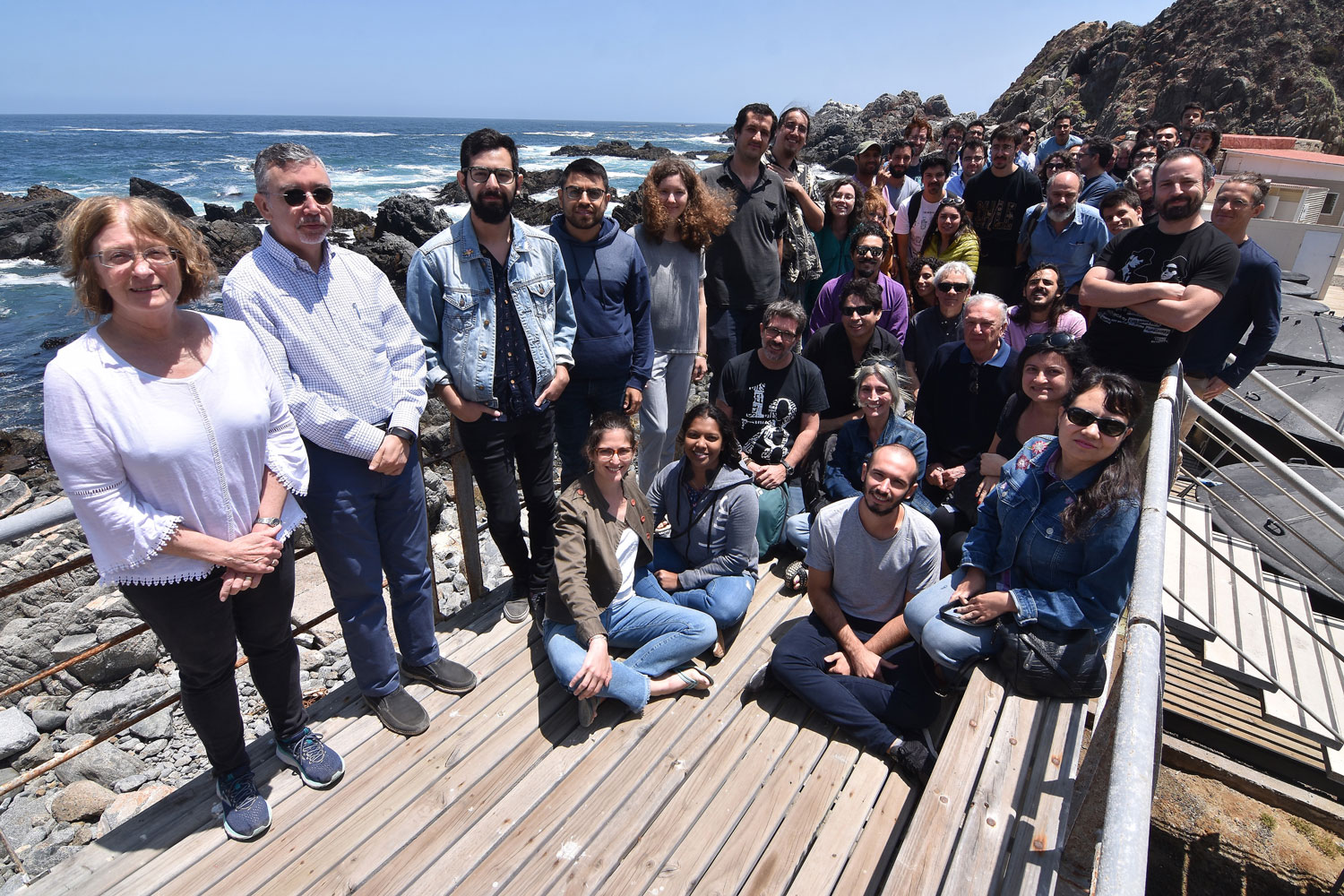Students Discover the MBL Magic in a Marine Lab Far from Woods Hole

Can the “Woods Hole magic” – that intangible something that MBL students for decades have tried to describe -- be recreated in a distant locale?
“Yes,” it appears, given the passionate response to the MBL Practical Course on Developmental Biology held last January in Quintay, Chile.
“This has been one of the most amazing experiences in my life, it definitely change[d] my mind!” wrote student Marycruz Flores on the course’s Twitter feed.
The course is a highly compressed version of the renown MBL Embryology course, offered in Woods Hole every summer since 1893. Aimed at graduate students and postdoctoral fellows, the course provides state-of-the-art research training in developmental biology using embryos from a variety of organisms, from sea urchins to chicks.
And, like in Woods Hole, the students are immersed in a beautiful and richly biodiverse coastal environment. After a morning of skipping over rocks, peering into tide pools and, back in the lab, imaging the marine organisms they had found, course faculty member Alejandro Sánchez Alvarado tweeted:
1 hour, 20 students, curiosity, a thirst for knowledge, and the immensity of the sea always yield beauty, new questions, new knowledge@DevBioQuintay @LASDB_DevBiol @___SDB___ @MBLScience @uandresbello pic.twitter.com/5OdCR5CXgs
— A. Sánchez Alvarado (@Planaria1) January 13, 2020
Roberto Mayor, founder of the Quintay Developmental Biology Course, took MBL Embryology in 1988 and he, too, found it life changing.
“The impact the MBL Embryology course had in my career was crucial. It helped me decide on the animal model for my post-doc (frogs), which is the same animal model I have used for almost my entire career,” says Mayor, now Professor of Developmental and Cellular Neurobiology at University College, London.
Mayor left Woods Hole that summer “convinced that having a ‘MBL-like’ course in Latin America was an urgent need, in order to give a similar opportunity to hundreds of brilliant students in the region.” His Embryology-inspired course made its debut in Santiago, Chile, in 1999, and has been offered every other year since then. More than 90 percent of the students that took the course in its early years are now principal investigators in developmental biology in Latin America, the United States and in Europe. In 2004, the course moved to a beautiful, former whaling station in coastal Quintay.
MBL Director Nipam Patel has taught in the Quintay course three times and in the MBL Embryology course for nearly two decades.
“The courses share the same tradition of working late into the night, pushing to try new things. And they were all fantastic students,” says Patel, who taught a Drosophila (fruitfly) module in the Quintay course.
 Hox gene expression in Drosophila; data collected by Quintay course students.
Hox gene expression in Drosophila; data collected by Quintay course students.MBL co-funded the Quintay course this year and two of its students, Ailen Cervino of Argentina and Nicolas Cumplido of Chile, were selected to attend the MBL Embryology course this summer.
“It’s the start of bringing MBL courses outside of Woods Hole,” Patel says, adding that discussions are underway to launch MBL-style courses in Hong Kong and Australia.
For Mayor, that Woods Hole magic comes alive in Quintay by observing “how the students marvel looking at embryos and the exciting discussions established between students and faculty. This year we had a student who was very theoretical; it was incredible to watch how amazed he was in the lab, looking through the microscope. You can almost see how their minds change during the course. The students that leave the course are not the same as the students that arrive on the first day.”

 Quintay course founder Roberto Mayor, second from left, and many of the 2020 participants. Co-organizers this year included John Ewer (Universidad de Valparaiso), Fernando Faunes (UNAB) and Joao Botelho (P Universidad Catolica de Chile).
Quintay course founder Roberto Mayor, second from left, and many of the 2020 participants. Co-organizers this year included John Ewer (Universidad de Valparaiso), Fernando Faunes (UNAB) and Joao Botelho (P Universidad Catolica de Chile).